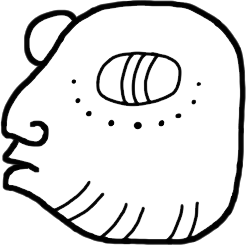Hello there! This is Tommy, with his very first blog post. I was introduced to Steve and Deb recently through Karla (my old spanish professor and a very good friend). We have decided to work together on a new function for the Ancient Mayan App. This feature will act as a complimentary second half to the glyph reading/transcription service that the app currently provides, and performs the direct opposite function: generating new glyphs-blocks as opposed to transcribing old ones. This second function will hopefully expand the apps potential users from its current academic/historical/archeological audience to encompass a native Mayan cultural audience.
What is the purpose of this new function? Currently there is no digital support for writing Mayan glyphs on any platform. There is some work being done on this front by others (for example adding Mayan glyphs to Unicode, read more at https://www.unicode.org/L2/L2018/18038-mayan.pdf), but as far as I can tell all of those efforts are focused on the academic front, to aid researchers in decyphering ancient Mayan glyphs (as the first part of this app aims to do). However there are millions of native Mayan speakers living today, some of whom are searching for ways to connect with their lost script. A way to digitally generate glyphs could aid them dramatically in that endevor, and in our discussions with some of those interest groups they have expressed a strong interest in such a program.
How will this function work? As part of my undergrad senior thesis three years ago I created a prototype program that proves the potential for generating novel glyph-blocks. It accepts a phonetic latin-alphabet input, parses it into Mayan syllables, and then constructs the appropriate syllable-glyphs into a glyph block. Examples of individual syllable-glyphs and then a short phrase are shown below. All of the syllables used in the program were drawn by me, and based off of the Tokovinine syllabary and the Kettunen & Helmke syllabary. The goal right now is to integrate some version of my prototype into the Ancient Maya App, and allow users to generate glyphs-blocks that can be saved as images or sent to their friends. I will save the details on all of that (as well as the known flaws and areas for improvement) for a future blog post.


A real example of the program in action is shown right below. If the user where to input the Mayan phrase “tin kiinsaj” the program would output the following:

Thank you all for reading! Best, Tommy
Coolio! Look forward to more informative blog posts!